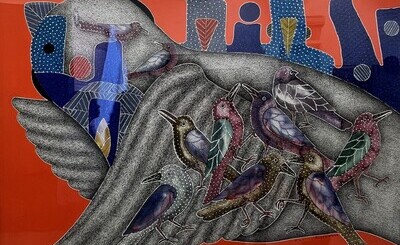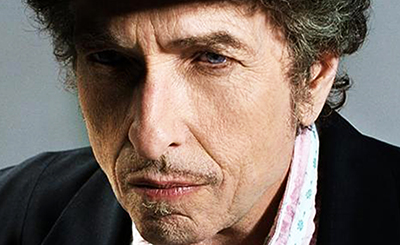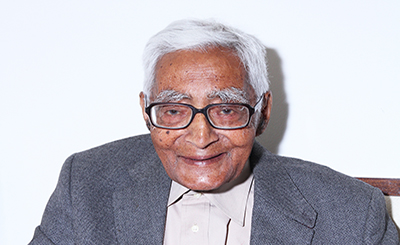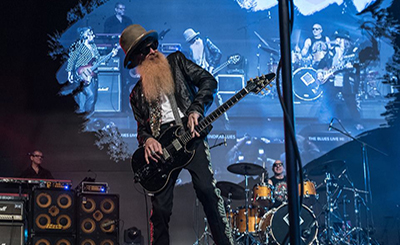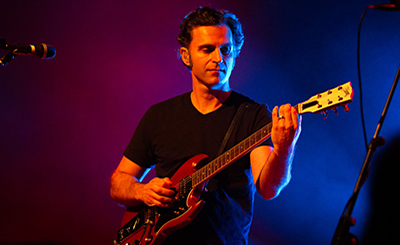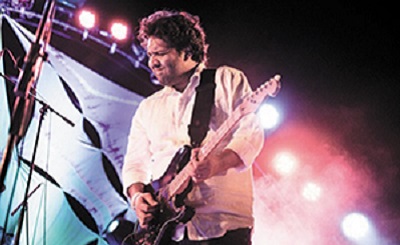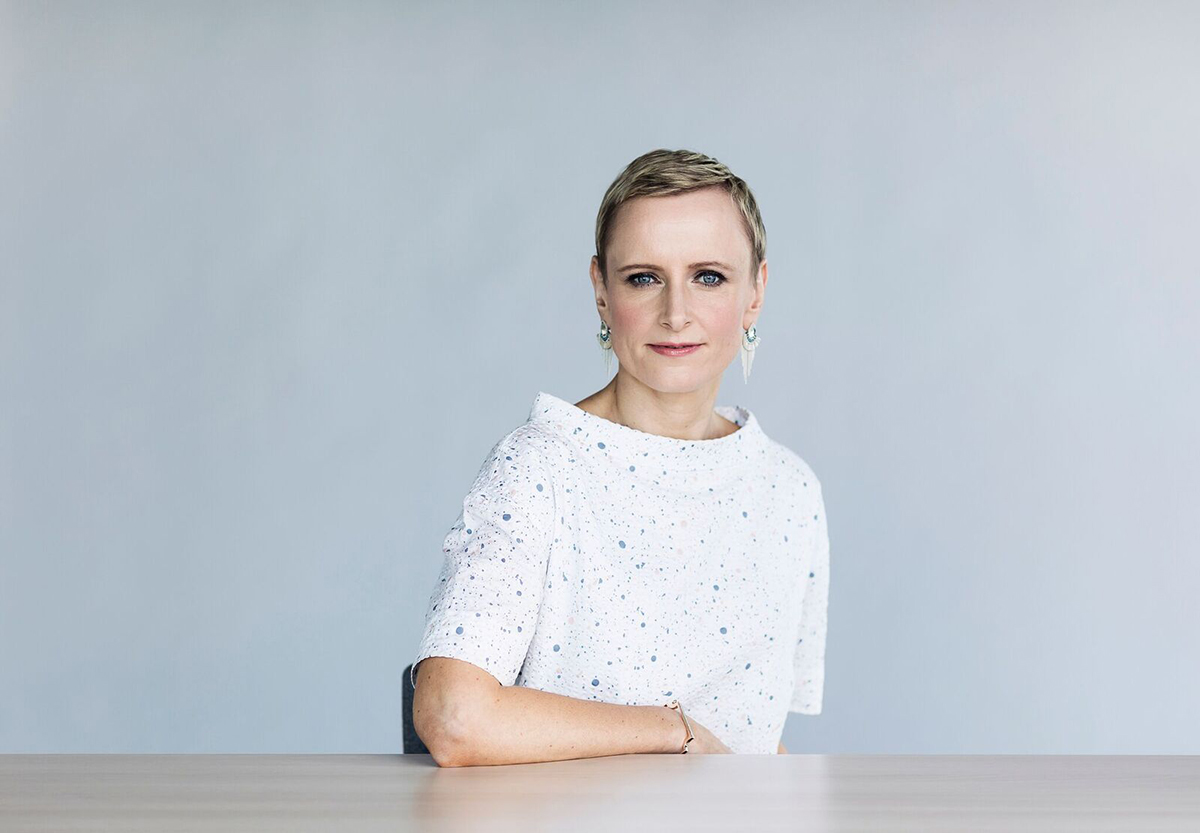
Maria Bourke, brand director, Asia Pacific, at Steelcase, the global leader in the office furniture and work life solutions industry. Photo courtesy of Steelcase
Maria Bourke is brand director, Asia Pacific, at Steelcase, the global leader in the office furniture and work life solutions industry. She is responsible for building brand awareness and engaging brand experiences while overseeing future direction of the brand in the region.
Maria has over 20 years’ of experience in brand, innovation and creative strategy with extensive multi-disciplinary design experience within in-house, corporate and consultancy. To date, she has covered electronics, lifestyle entertainment, luxury, workspace and technology sectors and worked with leading global brands across Europe, US and the Asia Pacific.
Maria was in New Delhi recently to launch Steelcase’s latest Series 1 office chairs which blend performance, style and choice. With 11 mix-and-match knit, flexor and lumbar colors, and a wide range of shell and finish options, Steelcase Series 1 offers an abundance of choice that enables organisations to express their brand in a way that represents them best.
The India market for workplace technology and design products has been estimated to be close to Rs 6,000 crore. Steelcase, a leading office furniture manufacturer, has been creating unique solutions for workers for about 105 years now. Since its entrance in India in 2008, the company has not only managed to safeguard its market share, but has also increased it, tapped all major cities and gained a wide portfolio of customers. India is a diverse market and to successfully support the workforce, Steelcase creates products led by insight and consumers’ behaviour.
Steelcase, a US-based company with a fiscal 2017 revenue of $3.0 billion and 13,000 employees, offers a comprehensive portfolio of architecture, furniture and technology products/services designed to support workplace wellbeing, increase productivity and foster social, economic and environmental sustainability. Some of its customers in India include Google, Facebook, Accenture, MasterCard, Dr. Reddy’s, Novartis, Pega, Jindal Steel, Infosys, Yahoo, etc.
In the last one decade, there has been a transformation in office spaces, with a major shift from traditional to modern design. In this interview, Maria talks about her role at Steelcase, the link between productivity and creativity and the trends in workspaces.
“At Steelcase, we look at aspects like biophilia, which is bringing nature back in. We know that biophilia can optimise workspace productivity by 10 per cent. It makes people feel more rejuvenated and content,” says Maria. “We also see personalisation as key. We know that people want to wield control over spaces. Office spaces are where people stay longer in any organisation. They reflect an individual’s particular taste. At Steelcase, we are acutely aware of such trends and that’s how we have kept our game ahead. We have to understand what’s happening around workspaces so we connect, act and help organizations,” she says.
Excerpts from the interview:
The Punch: Tell us about your role as brand director of Steelcase.
Maria Bourke: I joined Steelcase just over a year ago. I oversee the brand in Asia Pacific. It’s a brand new role, but we have an exciting team. Our job is to understand the markets and understand the relevancy in India, China and Japan. Steelcase is recognised as the pioneer company renowned for its workplace solutions. We have a team of researchers who bring in a lot of studies from various regions around the world and help us understand behaviours from different markets. We do not just design statistically, but design with a reason to be there. Steelcase realises that in the last 10-15 years, Asia Pacific has emerged as a very different region. It has got different energy, different ways. However, it’s an emerging market. This is where India starts to play its role and we know that India’s generation today is younger and we look at India and Japan for their young generations who are working in the teamwork space. India is youth driven and so its behaviour is different.
Our headquarters are based in the US, but we have a team in the Asia Pacific based out of Hong Kong. We’ve come to China and India specifically to understand innovation. What is happening in India is different from China but we realise that a big shift is happening. Silicon Valley, the leader of innovation, has started to see a change and companies have actually started to migrate towards Asia. Suddenly, Europe and America are looking at changing something in India, especially Bangalore (now Bengaluru). India has caught the attention of the world and some leading organisations and this is a great testing zone for innovations and fresh ideas. Since India is youth-centric, this is the big game changer globally.
At Steelcase, this is where we come in and start searching what is changing and why is India attracting all these companies and these hubs. Why, for instance, is the National Association of Software and Services Companies (NASSCOM) featuring them in their studies? With their observations, Steelcase has started to see how we support these different behaviours in India. Last year, we focused on creativity and disruptors in the market, how growth is becoming a huge thing for major leading organisations and how space can support that growth.
Innovation is equal to growth. That’s one of the key things where the workplace team has been working with leading organisations in these — in the hotspot of innovation. It is crucial to understand innovations, what supports them and how do they lead to product development for the future. When it comes to innovation, it’s not a normal linear process anymore.
Earlier, there was a big trend of people working from home, outside the office. That is actually now in reversal. People bring people back. We need to work together in groups and not in isolation and this is where Steelcase comes into the picture and supports these spaces.
The Punch: Today, the workspaces are increasingly linked with productivity and creativity. With the changing times, there has been a change in the structure of workspaces. Initially we had cubicles. But now there is a greater emphasis on more open, free and fluid areas in the offices. At Steelcase, what you essentially keep in mind while designing workspaces?
Maria Bourke: Creativity is the new productivity, which leads to profitability. It’s all interlinked with space. We look at such behaviours depending on the organisation. When it comes to creativity and innovation, these environments are very different. Now, we have rejuvenation spaces, which are the quiet zones. The idea is to ferment creativity. And at workplaces, you must have zones where the bubbling starts again when you come back there. These are spaces where ideas start to form. We have five different workplaces for different groups: There are different zones for different people. We have places that are more intimate, like Duo Studios — it’s for two people. It’s quite focused and offers respite from the individual think time.
Today, people are rebelling against a formal workspace. They want to feel at home. Companies are forever trying to draw people back to the workspaces. The HR also wants to retain people. So, there’s a huge competition among leading organisations to retain talents and not let them move to other places or be poached. If you want to create space where people are happier and feel better, you really have to think of a space that can be a happier workplace.
At Steelcase, we look at aspects like biophilia, which is bringing nature back in. We know that biophilia can optimise workspace productivity by 10 per cent. It makes people feel more rejuvenated and content. The products that we create reflect nature. That’s one of the key drivers in space design. We also see personalisation as key. We know that people want to wield control over spaces. Office spaces are where people stay longer in any organisation. They reflect an individual’s particular taste. At Steelcase, we are acutely aware of such trends and that’s how we have kept our game ahead. We have to understand what’s happening around workspaces so we connect, act and help organisations.
The Punch: How do you see technology driving the change at workspaces in India vis-à-vis Hong Kong or Japan or China?
Maria Bourke: India is leading when it comes to the use of technology. We know from research that in India everybody is using smartphone; it’s part of their daily lives. I cannot say that it’s the same is in every country in the Asia Pacific region. It’s natural to have a device ready at hand and with that comes technology and the cloud. Today, everybody is starting to share everything through cloud. The sharing of information is easier. I think spaces are also embracing technology. We know that people have multitude devices. When they are work, often from their phones, they could be in one corner and at the same time, still be connected to everybody in the world. Today, with the use of technology, you can capture information, organise meetings, workshops and connect with anybody across the globe very easily. Through these meetings and workshops, in some sense, you have conversations with people through the spaces you create at work. At Steelcase, we have an overriding emphasis on technology which has changed the way we work.
The Punch: One of the striking aspects of a company like Steelcase would be that it is attuned to consumer behaviour. How do you mould the brand to customize your products to suit a particular region? How do you keep a tab at the changing paradigms at workspaces?
Maria Bourke: With India, space is very important. Here, like other major cities in the Asia Pacific, we don’t have the luxury of space, unlike Europe or America. Spaces are smaller; we have to think about how people work in these spaces. In India, you also have more and more people from the younger generation who are part of the workforce. Our concerns are: How do we encourage creativity and innovative thinking and how do we retain them in their workspaces? We have to think about how we keep sharing the information, how we are able to boost creativity. For instance, how do we change the idea of the cubicle and make it more open yet private? At Steelcase, we want to understand that at workspaces, where do people need focus and time, where do they need collaborators, where do they need the bigger group to gather or whether companies need a lot of meeting rooms. Sometimes, the meeting room is overvalued and takes up lots of space. This is an area where technology plays a big role. We are interested in space analytics. How do we measure this energy? How do organisations understand and how do they use spaces? In Hong Kong, in our workspaces, we have a device that tracks the person in the room, how long is he or she using the space. This way, we know whether we are optimising our space. If not, we try to know what we need to do to fix that. There’s no point of having a meeting room for 10 people that’s empty everyday or has one person sitting there. So, we learn and then adapt accordingly. We have got to change with the behaviours around us; we have to be willing to change as well.
The Punch: What does the future look like in terms of design at the workspaces? What are the key elements that you think will define the future of workspaces?
Maria Bourke: A number of things. There’s space and behaviour follows from there. From the design perspective, we did a lot of studies in India. Here, we created stands at workspaces where people could sit in standing postures — it helps when people stand at the eye level than at different heights. Our latest Series 1 chairs are designed for smaller footprints as well but it still has all the factors that a great texture needs to have, if not more. These are factors that we realise are important to organisations as well from studies.
The Punch: How do you look at collaborations with different companies with similar vision?
Maria Bourke: At the beginning, we need to understand the challenges. We don’t come in with the solutions first. We don’t say that we have furniture. We understand the challenges and help the organisations find solutions. We also have teams that sit and study and watch these behaviours. So, they will go in and spend time with the organisation and then generally do workshops before we even get to the point of discussing the needs. Application teams are very focused on that and then the solutions come later and then the furniture. A piece of furniture is usually the last aspect. It’s more about the strategy and thinking first.
The Punch: How do you look at disruptors? How do you prepare yourself to face the competition?
Maria Bourke: While some companies are more statistically led, we’re more insight-led. We look into data, information, studies, behaviours that contribute to a particular process. While we think of everything in its entirety, it’s an ecosystem: we look at applications and not just one item. Collaborations are an ecosystem of spaces and not a product. We have to think of people as they are the most important factor of the workplace. Our job is to ensure that they enjoy coming to work every day or just don’t want to leave.
The Punch: How would a workspace for the young in India look like?
Maria Bourke: It’ll be agile, very flexible, catering to their needs. The use of material things is very important. The space would be also like a different eco-system to keep them engaged. The workers in India are very happy to work.
The Punch: What are some of the key changes that you see as defining the workspace?
Maria Bourke: It’s important to build culture first and everything gradually falls into place, including technology and innovation etc.
More from Arts
Comments
*Comments will be moderated




